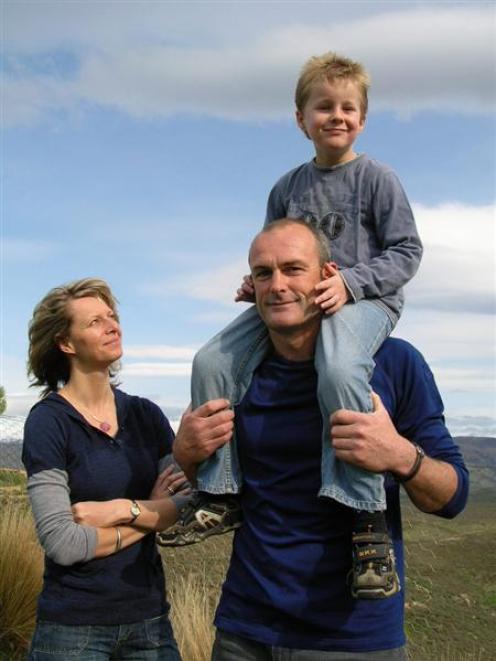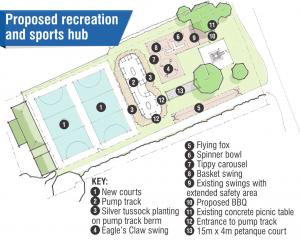
Tom McLellan wants to be tall like his dad, play sport, and have enough energy to attend school.
But such simple aspirations come at a cost of $50 a day, the price of the medication he needs to combat the effects of the rare Prader-Willi Syndrome (PWS), which he was diagnosed with when he was just 3 days old.
For the past three years, Tom has had daily injections of growth hormone, which have allowed him to lead a pretty extraordinary life.
He recently competed in a school running race, and despite coming last, it was an achievement he was never expected to make.
Without medical intervention, Tom would have died at birth.
His poor muscle tone and low bone density reduced him to little more than a "floppy doll" of a baby.
"He was not able to lift his head until 5 months old, and slept most of the day and night. He didn't even cry until he was 12 months old. I had to set my alarm to feed him," his mother, Rachel, said.
When Tom was 3, his parents started him on growth hormone treatment (GHT) to improve his quality of life and prevent him from an early obesity-related death.
It costs them $50 a day.
At the time, Tom was 88cm tall.
Today, at age 6, he is 123cm and growing.
Initially, there was no government funding for GHT treatment.
When Pharmac introduced criteria for PWS sufferers in 2006, it was too late for Tom.
He had grown taller than the height-driven criteria by a mere 5mm.
To qualify for government-funding, a child's height must be lower than the third percentile in the country.
Girls qualify for the treatment between ages 2 and 14, and boys between 2 and 16.
Of the 23 children in New Zealand with PWS, 13 are missing out on government-funded GHT because they are not considered short enough.
With each $50 injection the McLellans administer to their son, they kiss goodbye the chance to have his GHT paid for.
"Despite the crippling cost, every cent is worth it when we see the benefits in Tom," Mrs McLellan said.
The McLellans are believed to be the only family in New Zealand privately funding a PWS child's treatment.
Other families who cannot afford GHT watch their sick children go without.
"That would be heartbreaking and is why the circumstances are so cruel. Time is running out for older children with PWS whose families cannot afford GHT, as maximum benefits can only be achieved in the growing years," Mrs McLellan said.
She and her husband want Pharmac to remove its height criteria.
"Height is totally irrelevant and we would like to see GHT made available to all children with PWS."
Fight for rights
Ironically, the McLellan genes also played a part in Tom not being funded for GHT, as both parents are above the average height for men and women - Mrs McLellan is 176cm and Mr McLellan 192cm.
As a result, Tom was slightly taller than other PWS children before his treatment began.
Today, after receiving growth hormones, he is taller than average for his age, but is in proportion genetically.
Tom's older brother Jack (8) and younger sister Lucy (3) also defy the odds in relation to their height.
At 125cm tall, Jack is about the same height as Tom, although he is expected to go through a growth spurt.
Lucy seems to have already done so, however, as she stands at 107cm tall - an almost "off the charts" height for a 3-year-old, Mrs McLellan said.
Without GHT injections, Tom's quality of life and hopes of fitting in would diminish.
As a single treatment used by people with different disorders, GHT has many positive spin-offs for PWS sufferers.
It helps build bone density and muscle tone, increases height, and boosts energy.
Without it Tom, who with PWS is addicted to food and prone to obesity, would gain weight until it seriously disabled, or killed, him.
"Before growth hormone treatment, Tom was short for his age and was starting to gain weight rapidly. He had abnormally small hands and feet, was much weaker than his peers, and was tired most of the time.
"In his first year of treatment Tom's small hands and feet normalised, he went through several shoe sizes, started to run, and his balance improved. With bigger hands he was able to hold a cup in one hand, something most 3-year-olds take for granted," Mrs McLellan said.
At age 6, Tom is stronger, has more energy, and can hold his own when playing rough with Jack and Lucy.
The McLellans consider themselves lucky to have been able to afford, at a pinch, Tom's treatment so far.
A worsening economic climate has started to take its toll on the family, however, and the need for government-funded GHT has never been greater.
They are seriously considering moving to Australia, where it is expected the Government will fully fund GHT for PWS children up until the age of 18.
"We would not move through choice, but if Pharmac doesn't change its criteria in New Zealand it is what we may have to do," Mrs McLellan said.
The change would be hardest on Tom, who struggles with the smallest glitch in routine, like most PWS children.
"He takes a long time to adapt and adjust. He is in a stable place here in Alexandra and gets on really well with his teacher aid," she said.
Pharmac's say
Pharmac has been blamed for the "cruel lottery" it conducts with its criteria for government-funded GHT for PWS sufferers, according to New Zealand Prader-Willi Syndrome Association spokeswoman Linda Thornton.
"Height's got absolutely nothing to do with whether PWS children should or should not receive GHT, which is recognised world-wide as a hugely valuable treatment for PWS.
Most other Western countries fund it for this reason and by opting to treat only short PWS children, Pharmac has made PWS treatment a lottery," she said in a recent press release.
Medical director Peter Moodie said Pharmac's review of growth hormone funding criteria was "moving forward", but would not happen overnight.
Dr Moodie said when funding was first made available in 2006, Pharmac developed its criteria because it was believed children who were shorter were more likely to benefit from treatment.
"That was the group funded first. We committed to reviewing the criteria within 18 months at the time, and this occurred from mid-2007," he said.
Dr Moodie said while a primary clinical committee recommended GHT be funded to more PWS children in August this year, Pharmac was currently dealing with other requests for funding.
"We are continually faced with a range of funding opportunities, including new treatments for cancer, diabetes, and arthritis. It's never an easy choice to decide which funding opportunity outranks another, but the nub of Pharmac's job is to ensure people don't unnecessarily miss out on treatment," he said.
Dr Moodie said GHT did not solve all PWS problems and was an expensive treatment to administer as the cost grew with each PWS child's body mass.
"Though the relatively small patient size means the overall cost of widening access is not great, this is still new spending and any decision needs to be carefully thought through.
"At the moment, the annual cost of GHT for PWS patients ranges from $11,000 to $22,000 and it is expected to increase," he said.












